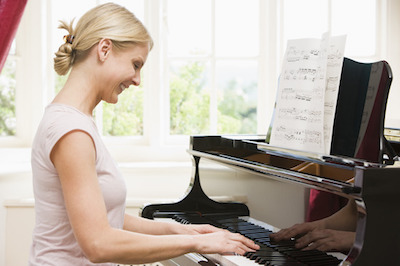Playing the piano is more than sitting in front of the keyboard and tapping a few keys. You need a quality piano to have the perfect sound. And you need to feel your best and sit at the keyboard with good posture to ensure that sound comes through.
Relax your fingers
Tense fingers won’t roll across the keyboard naturally. To find the right finger shape, place your hand gently over your kneecap. Feel the curve of your hand? That’s how you want to approach playing the piano. Keep your fingers gently curved and relaxed as you set out to play a song.
Balance
The piano seat you use will help keep your body in alignment as you play. You should sit up tall and straight, with your head aligned over your body so your back and shoulders don’t experience undo stress. Wiggle your shoulders to help you relax. You can gently turn your head until you feel it come into alignment on your shoulders.
Use a footrest
As kids learn to play the piano, they often have trouble sitting properly at the keyboard. They tend to slide to the edge to have easier access to the floor. In order to keep them properly positioned on the bench, place a footrest or a few books on the floor so they sit comfortably at the piano. Having their feet on the ground will help them relax their upper body.
Wrist action
While many people think piano playing depends on the fingers, most of the movement actually comes from your wrist. It’s important to keep your wrist flexible to transfer energy from your arms into your fingers while you play. The wrist should be able to help bounce the fingers into play and then up again all through the song. It should always feel comfortable and relaxed.
Arm alignment
When sitting at the piano, the elbow, wrist, and pinky finger should all line up. Kids have a tendency to rotate their hands so their wrists are bent. If you focus on keeping the wrist straighter, you’ll be more comfortable throughout your playing.
Allow gravity to help you play
Move your chair or bench away from the piano and practice holding your arms as if you are playing. Feel how they bounce and move? Your arms should never have resistance or be anything but comfortable while you play. Practice relaxing your arms from the shoulder down. Once you have this feeling down, transfer it to the way you play when you’re sitting in front of the keyboard. The action should come from your arm, not your fingers.
Sit and Lean
Kids sometimes have a hard time sitting in one place. They slide all over the piano bench. But for proper hand placement and to learn piano efficiently, they should sit in one place and lean into position as the notes of the song change. Again, a footrest can help them root into the bench and give them more strength as they play.

